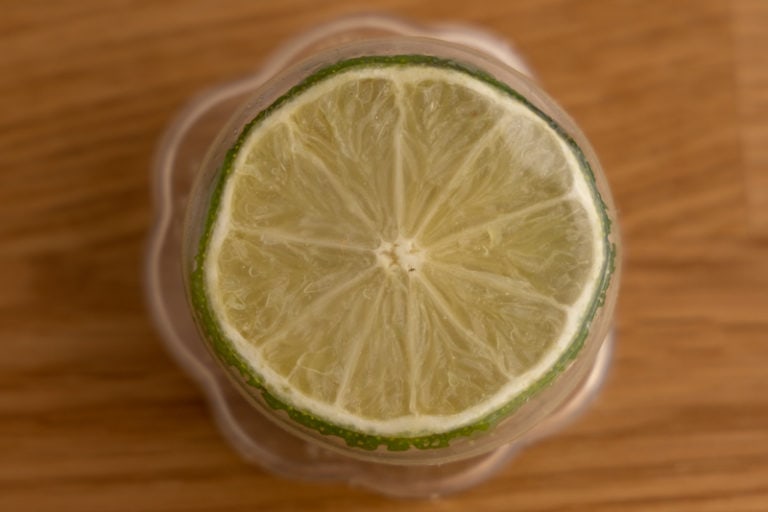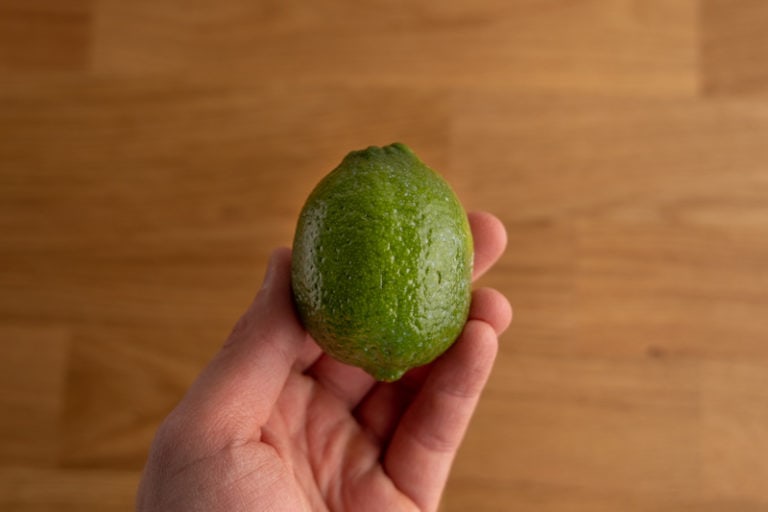How Long Do Mangoes Last and How to Tell if They’re Bad?
Here’s everything about the shelf life and spoilage of mangoes. Learn how long mangoes last and how can you tell if one is still okay to eat.
You’ve bought some mangoes for the first time. You started unpacking them and realized you don’t know much about this fruit. How long do mangoes last?
If that’s your experience, don’t worry. Mangoes are quite similar to other tropical fruit, like avocados or papayas. If you know a thing or two about either, everything below will sound familiar.
If not, no problem. In this article, I cover all you need to know about the mango fruit, so once you’re done, you’ll know exactly what to do with yours.
To start things off, let’s discuss the differences between ripe and unripe mango. You need to know which is which before we can continue.
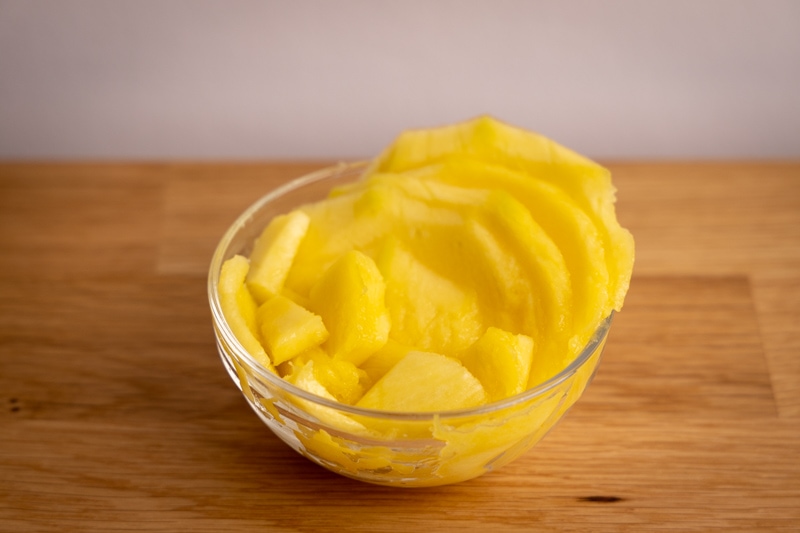
How To Tell If Mango Is Ripe?
To know where to put your mangoes, you first need to know if yours are ripe or not.
So, how to tell if a mango is ripe? There are a couple of things to look at:
- Feel. Feel is what you should focus on. The mango should be on the softer side, but not mushy. In other words, the fruit should give a little to gentle pressure.
- Smell. Sometimes the stem gives a fruity smell, which indicates that the mango is ready for consumption. Mine didn’t smell like much, though, and the fruit was perfectly fine.
- Skin shriveling. If the skin near the stem end starts to shrivel, the fruit is ripe and actually starts to go overripe.
The color of mango, unfortunately, isn’t a good indicator of ripeness. That’s because different varieties have different colors, and some don’t change at all color-wise as they ripen.
When assessing ripeness, you should first and foremost consider how the fruit feels in hand. If it feels right, consider it ripe, no matter how it looks or smells.
Now that you know if your mangoes are ripe, we can discuss their shelf life.
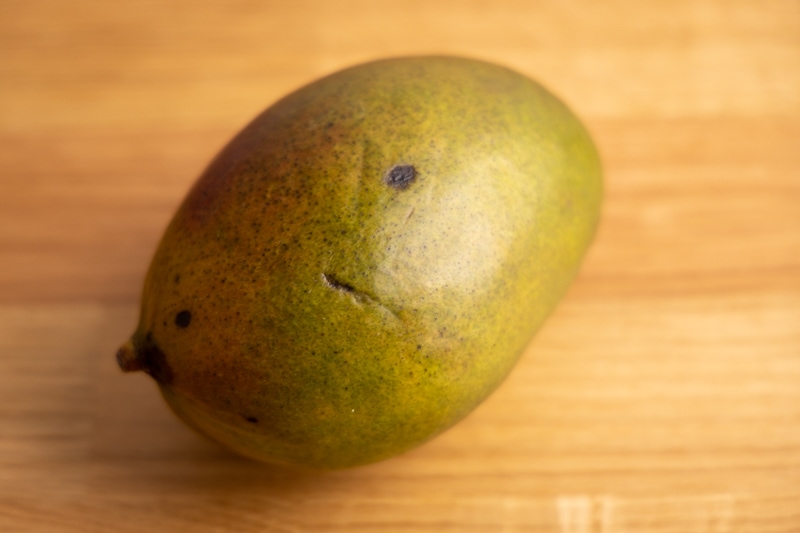
How Long Do Mangoes Last?
An unripe mango needs between a day and seven days until it ripens. Once ripe, it lasts about 5 to 7 days in the refrigerator, but only 2 to 3 days if you leave it at room temperature.
For an unripe mango, the time it takes to ripen can be anywhere between a day and seven days. It all depends on the fruit. One that’s uniform green and firm to the touch will take much longer to mature than one that’s already yellowish and somewhat soft in some areas.
When it comes to ripe mangoes, they should last at least 5 days in the fridge. Obviously, you might get an extra day or two if yours wasn’t fully ripe before you moved it to the refrigerator.
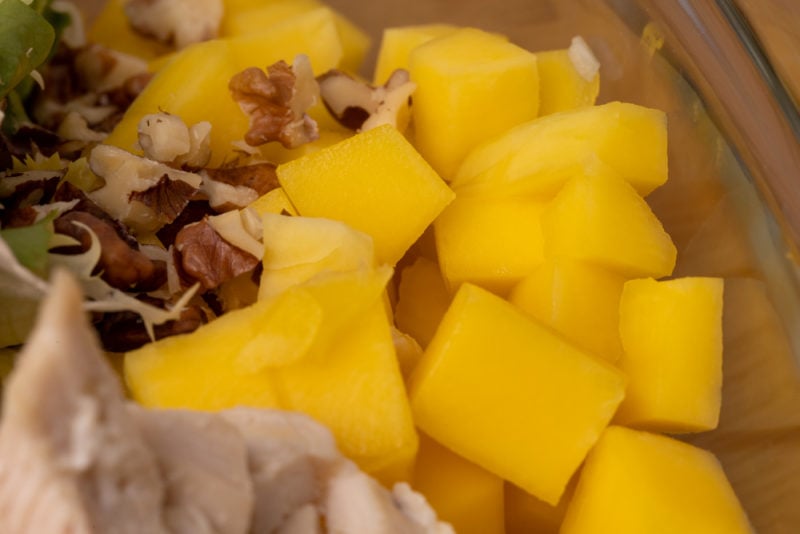
Cut mango, including halves, slices, cubes, and mango puree, lasts 3 to 4 days in an airtight container or resealable bag in the fridge. If you need more time, freezing cut mango is a good option.
You’ve probably seen frozen mango in freezers in supermarkets, and there’s no reason you can’t do that yourself.
Related: Can you freeze mango?
| Room temperature | Fridge | |
|---|---|---|
| Unripe mango | 1 – 7 days until ripe | |
| Ripe mango | 2 – 3 days | 5 – 7 days |
| Cut mango | 3 – 4 days |
Please note the periods in the table above are only estimates.
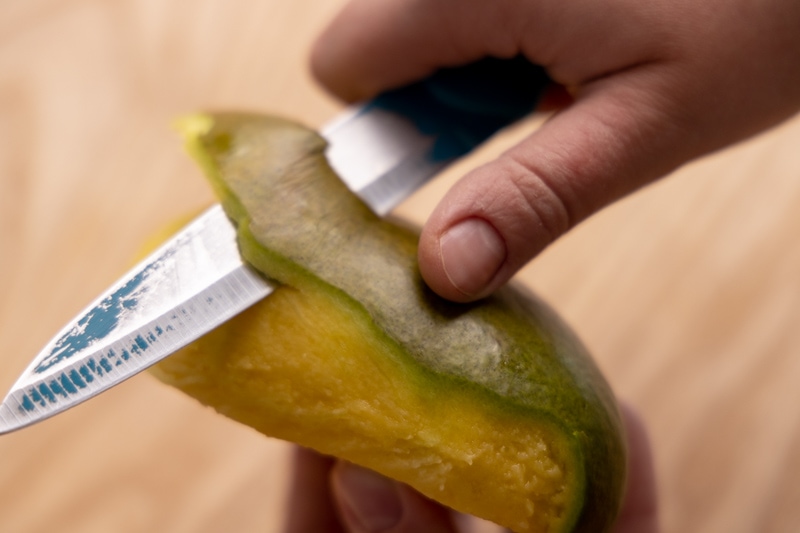
How To Store Mangoes
Main article: How to store mangoes?
You’ve already got a couple of hints about storing mango in the previous section. Let’s expand on that.
When it comes to storing unripe mangoes, a paper bag at room temperature is the way to go. Of course, the fruit can also sit on the counter or in a fruit basket. Just make sure it’s not in direct sunlight.
If you need to speed up the maturing of the fruit, that paper bag will be useful. It’ll help trap the ethylene gas that the fruit produces, which aids the ripening process.
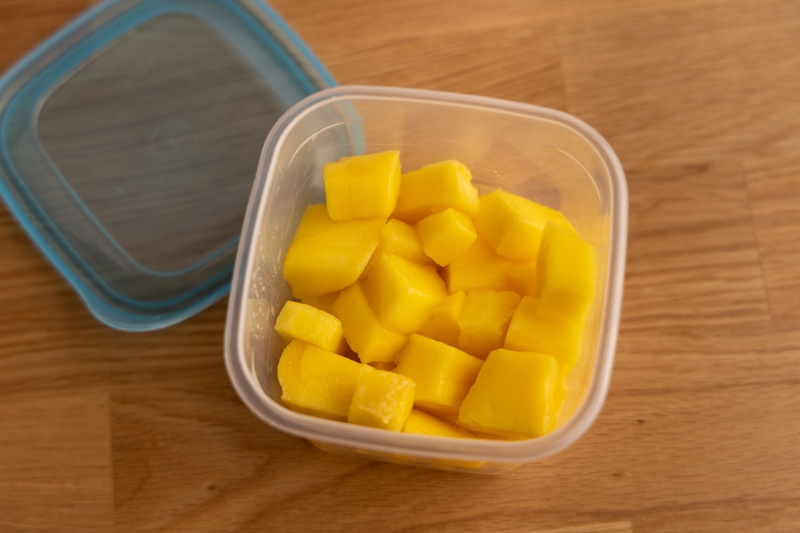
To accelerate things up even further, put in a tomato or avocado inside that bag to get even more ethylene. You can also add an apple or a banana, or any other fruit or vegetable that produces the mentioned gas.
Last but not least, check mangoes for ripeness every day or two.
The same process works for other fruits that aren’t always ripe when you buy them, e.g., plums, apricots, and so on.
Related: Do plums need to be refrigerated?
Related: How to store apricots?
For a ripe mango, the fridge is the best option. That’s because mangoes continue to ripen at room temperature, which shortens their shelf life. The whole fruit can sit in the fridge without any extra packaging.
When it comes to sliced mango, put the pieces in an airtight container and throw it into the fridge. As easy as that.
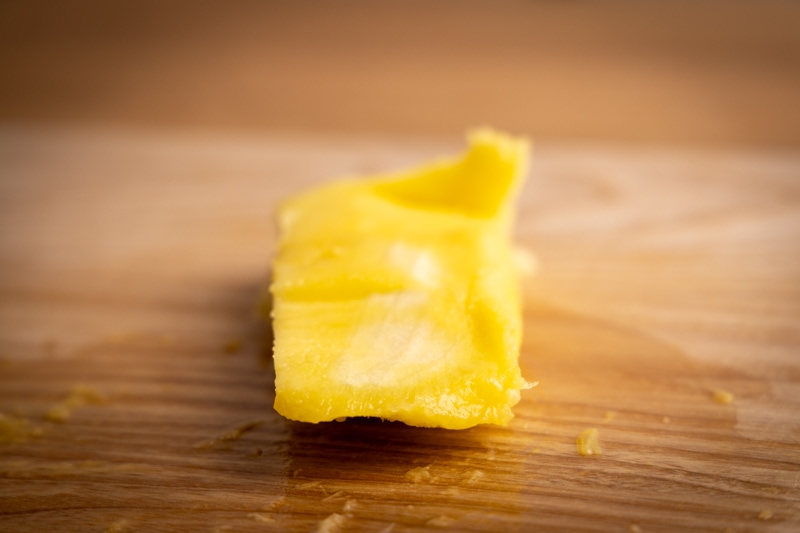
How To Tell If a Mango Is Bad?
Knowing if a mango is spoiled or not is no rocket science. All the signs are pretty clear. Here are a couple of the most common ones:
- Mushy flesh A ripe mango is a bit soft to touch, but far from mushy. If yours has gone this far, it’s probably best to discard it. Same thing if there are any large sunken spots. If your mango is quite old, chances are its flesh will start to darken and soften near the rind. If those discolored areas are soft, I suggest simply cutting them out and using the rest.
- Oozing liquid. That mango is gone, throw it out.
- Large black areas on the skin. If the fruit starts to turn black, it’s quite apparent it’s overripe and no good. Please note that a couple of black dots here and there are just fine. Mine had several, and the fruit’s flesh was perfectly fine. Just look at the photo below.
- Mold. This is pretty obvious.
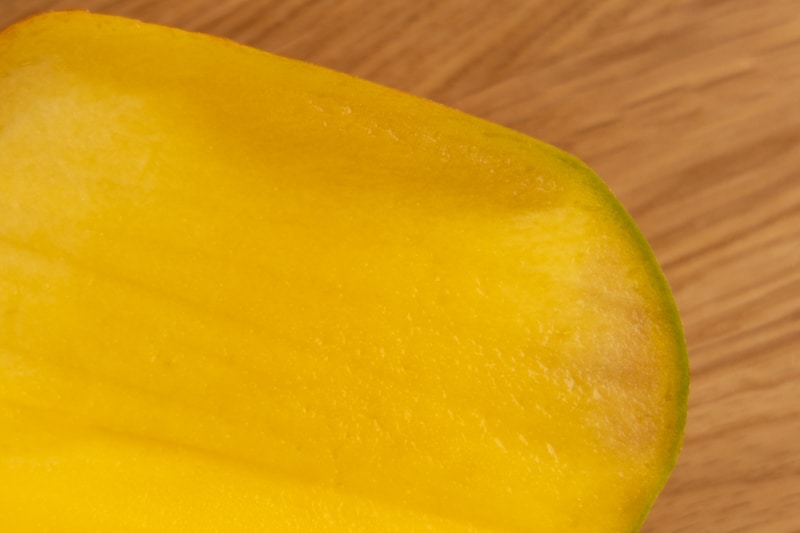
Last but not least, if you feel like there’s something wrong with the fruit, like it tastes or smells weird, throw it out. Your senses are quite good at figuring out if a piece of fruit is edible or not. Listen to them!
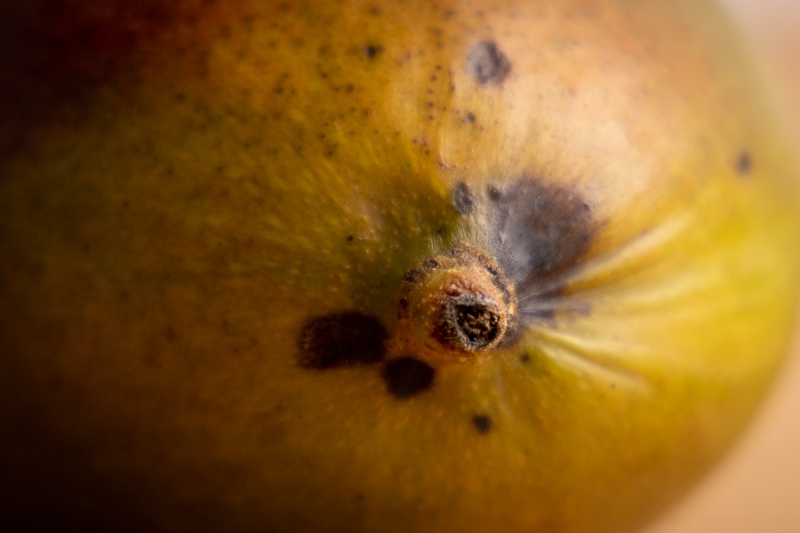
How To Cut Mangoes
Cutting and preparing a mango is, at its core, finding the pit and cutting around it.
The pit is the white-ish part inside the fruit. You can see it in one of the photos above.
It’s not like an avocado pit or the seeds in an apple. It’s sort of merged with the rest of the flesh, and removing it isn’t that easy. Basically, you cut out as much of the soft flesh as you can, and leave the rest.
When it comes to ways of cutting the mango, there are several options. Some of the most popular ones are:
- Peel and slice. Peel the whole fruit, then slice lengthwise until you get to the pit. Repeat the same from the other side.
- Cut out the middle part first. Grab the fruit and cut it lengthwise about half an inch (depending on the fruit wise) from the center on both sides. The middle part is the pit. Grab a teaspoon and eat the flesh from the two halves. You can also try and remove some from the middle piece, if possible.
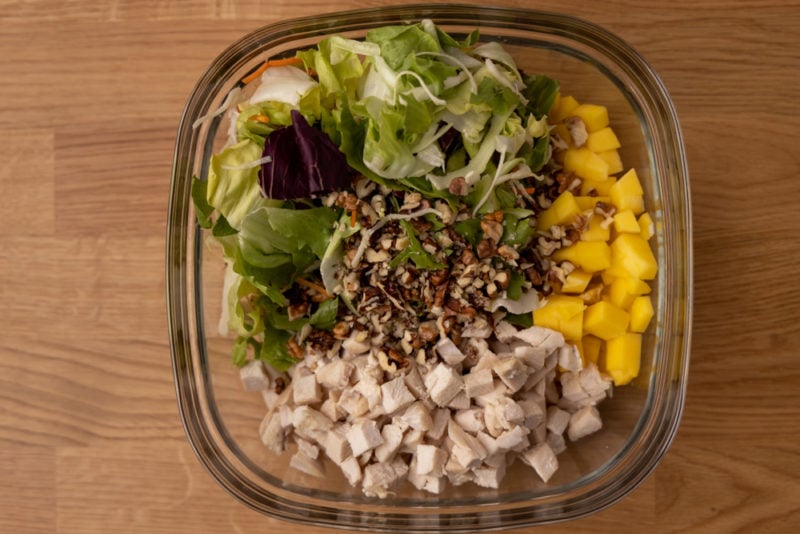
Rotten Records: Share Your Snap!
Caught some food past its prime? Upload your photo to “Rotten Records” and help others spot the signs of spoilage. Every image makes our food community safer and more informed!

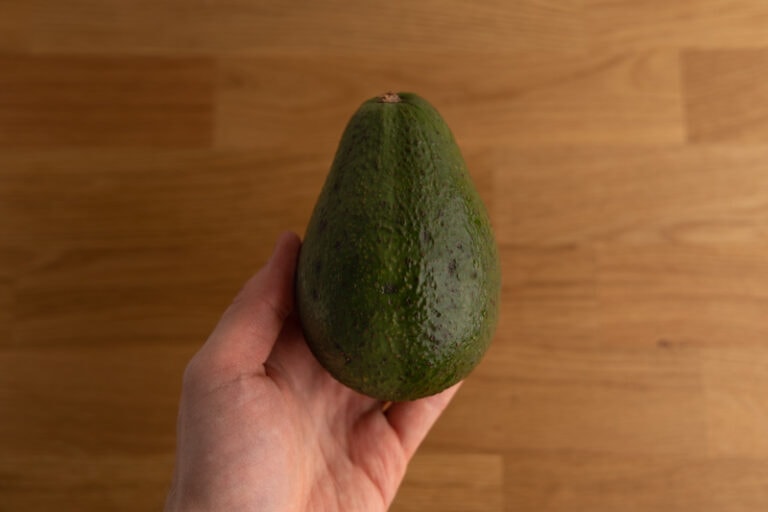
![Can You Freeze Honeydew Melon? [Yes, Here’s How]](https://www.doesitgobad.com/wp-content/uploads/Frozen-honeydew-chunks-768x512.jpg)
